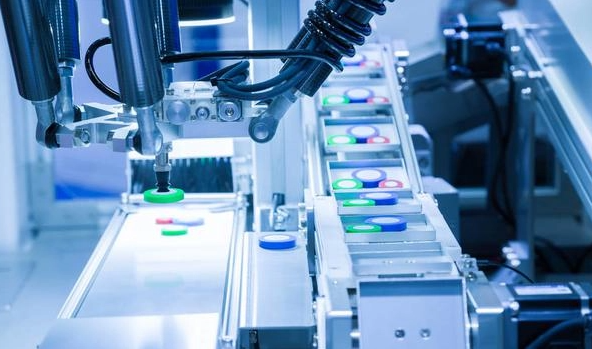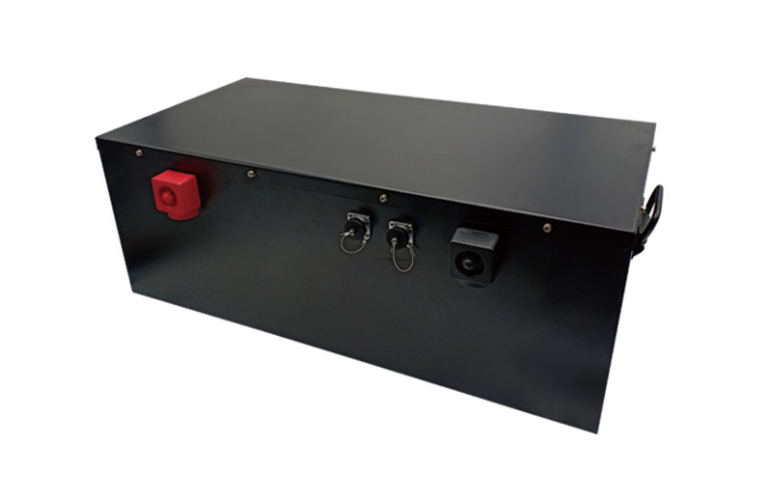Lithium-Ion, or Li-Ion battery are a type of rechargeable battery that’s used in many applications, but most commonly in the electronics industry. Li-Ion battery provide portable electricity, powering electronic gadgets such as mobile phones, laptops and tablets. Li-Ion battery are also used to supply energy to medical equipment, electric vehicles and power tools.Lithium battery have a long list of real-world applications beyond running the apps on your phone. From life-saving medical equipment to luxury yachts, lithium battery keep both the essentials and the comforts of modern life running with safety and reliability.
Lithium battery have been around since the 1990s and have become the go-to choice for powering everything from mobile phones and laptops to pacemakers, power tools, life-saving medical equipment and personal mobility scooters.One of the reasons lithium-ion battery technology has become so popular is that it can be deployed in various practical applications. Keep reading if you’d like to learn more about some of the uses for these rechargeable battery that are made using metallic lithium-ion cell technology.
Li-Ion battery come in different types, but they are generally made up of the following components:
- Cathode or the positive electrode: Source of lithium ions that determines the battery capacity and voltage
- Anode or the negative electrode: Section that stores and releases ions through an external unit
- Electrolyte: Medium that transports ions between the cathode and anode
- Separator: Barrier that prevents the cathode and anode from coming in contact with each other
These major components need to be present in a Li-Ion battery in order to function properly.
What are lithium battery?
Li-ion battery technology uses lithium metal ions as a key component of its electrochemistry.
Lithium metal ions have become a popular choice for battery due to their high energy density and low weight. One notable example is lithium-ion battery, which are used in a wide range of electronic devices, from smartphones to laptops. Another type, lithium iron phosphate battery, offer greater stability and a longer lifespan. This makes them well-suited for use in electric vehicles and large-scale energy storage systems.
Basically, lithium battery have four key components.
- Cathode material: The material used for the positive electrode determines the voltage and capacity of the lithium-ion battery as well as being the source of the lithium ions. There are various cathode materials. For example, a lithium iron phosphate (LiFEPO4) battery uses lithium iron phosphate as the cathode material.
- Anode material: When the lithium-ion battery pack is being charged, the anode material of the negative electrode is what the electric current flows through from an external circuit. It is also where Li-ions are stored.
- Electrolyte: This is made up of additives, solvents, and salts. It is the conduit between the cathode and anode.
- Separator: This is what separates the anode and cathode materials.
The Seven Top Uses For Rechargeable Lithium-Ion battery
1. Emergency Power Backup Or UPS (Uninterruptible Power Supply)
Having a lithium battery for an emergency power backup or UPS protects you from traditional power loss or instability. It is different from a generator or other emergency power backup in that it provides nearly instant power in order to run (or safely shut down) the equipment it is connected to. Emergency power backup systems benefit critical equipment: computers, communication technology and medical technology.
2. Dependable Electric And Recreational Vehicle Power
Lithium battery offer reliable, stable, long-lasting power – the best solution for staying comfortable and safely exploring remote locations. With a life span of over ten years, lithium battery provide power for long journeys and lose little power between uses. Lightweight lithium battery power your RV or electric vehicle with increased efficiency due to reduced weight and size as compared to lead-acid battery.
3. Reliable And Lightweight Marine Performance
Mixing water and electricity provides the potential for numerous problems. Lithium battery let you focus on the fun of being on the water, not on the worry of whether your marine motor starts at the end of a long day.
Upgrading your boat to a long-lasting rechargeable lithium battery gives you years of reliable motor starts at a fraction of the weight of a traditional lead-acid battery.
Whether you need to power a small trolling motor, or power all of the conveniences of home on a yacht, lithium battery are capable and dependable.
4. Solar Power Storage
The use of solar power in the United States increased 30% from 2013 to 2014. Even in the desert, there are days when the sun doesn’t shine or times when your solar equipment needs repair. Avoid getting left in the dark with lithium battery for solar power storage.
Rechargeable lithium battery are the best match for solar panels due to how they charge, and how fast. Solar panels produce low resistance charging, which is what lithium battery require. In addition, lithium battery charge quickly – allowing you to maximize the potential solar power storage from each day of sunlight.
To learn more about how to calculate your energy needs and find the optimal battery for your application and usage, visit our Lithium Battery Selector Tool.
5. Surveillance Or Alarm Systems In Remote Locations
Don’t let the absence of hard-wired electricity limit your security. Do you need to monitor remote perimeters, a fleet of vehicles, job sites, or a temporary location where a permanent alarm system install is not possible? Secure any of these difficult locations with a surveillance or alarm system powered by lithium battery.
Rechargeable lithium battery are ideal for remote monitoring systems due to their long life, small size and not losing power via self-discharge during the time that your system is inactive. Lithium battery have a self-discharge rate that is 10 times lower than lead-acid battery, making them ideal for situations where they are not under continuous use.
6. Personal Freedom With Mobility Equipment
Modern technology has made daily life easier for people with mobility restrictions. From electric wheelchairs to stairlifts, numerous individuals depend on reliable mobility technology to live an independent life. Lightweight lithium battery are the ideal choice for mobility equipment, as they offer size customization, a longer life span, fast charging, a low self-discharge rate, and extended run time when compared to lead-acid.
7. Portable Power Packs That Eliminate Downtime
Rechargeable lithium battery are well-known for powering our phones and the latest lightweight laptop computers. Lithium battery are lighter and smaller than lead-acid battery. They also tolerate movement and temperature changes, as well as maintain their power delivery during use.
Safety and Environmental Hazards of the Li-Ion Battery
Despite its widespread use and energy-efficient storage, the Li-Ion battery isn’t perfect; it can be a safety hazard if produced, used, and stored improperly. Because the battery contains flammable electrolytes, Li-Ion battery have a tendency to become pressurized to the point of exploding should they sustain any structural damage. When charged too quickly, Li-Ion battery can also run the risk of short-circuiting and causing an explosion.
Because of this, and because of its widespread use in most commercial products, the safety standards and safety testing of Li-Ion battery is much more stringent than other types of battery. The flammable electrolytes present in Li-Ion battery means that improper production can lead to often disastrous results.
Li-Ion battery are also susceptible to damage when charged beyond their voltage limits. Normally, a Li-Ion battery has a voltage range of between 2.5 and 3.65 volts (or, up to 4.35V depending on the cell’s composition). Exceeding this voltage due to improper charging can lead to a premature aging of the battery’s cells, which, at best, means the battery stores energy less efficiently, or at worst, causes the reactive components in the cells to explode.
When stored for too long, Li-Ion battery can also degrade prematurely, which means it won’t be able to reach its normal voltage range when finally used. This poses a risk because it runs the chances of being overcharged despite the user following package instructions for charging.Although Li-Ion battery use ‘less toxic’ metals such as iron, nickel, copper, and cobalt (and are categorized as such), their production and method of disposal can still pose a substantial hazard to the environment.
While the metallic components of Li-Ion battery are recyclable, and are even safe for both incineration and in landfills, repurposing them for reuse and reproduction in other products is a lengthy and expensive process, which, in turn, leads manufacturers to forego recycling and instead just mine new components.
Types of Lithium ion battery
The lithium ion battery are classified on the basis of active materials used in their chemistry. Every type of lithium ion battery has its own benefits and drawbacks. Basically there are 6 types of lithium ion battery available in the market, they are:
Lithium iron Phosphate (LiFePO4) or LFP battery
Phosphate is used as the cathode and graphite as anode. LFP delivers good thermal stability and performance.
Uses: LFPs are the most common Lithium ion battery used to replace the conventional lead acid battery.
Benefits: Safety, durability and long life cycle.
Drawbacks: Performance suffers in low temperatures and they also have a low specific energy.
Lithium Cobalt Oxide (LCO)
These battery have high specific energy but low specific power.
- Uses: Small portable electronic items such as- mobile phones, laptops, cameras etc.
- Benefits: LCO battery deliver power over a long period of time due to high specific energy.
- Drawbacks: Costly, shorter life span, cannot be used for high load applications.
Lithium Magnesium Oxide (LMO)
LMOs use MgO2 as the cathode material thus improves ion flow.
- Uses: Portable power tools, electric and hybrid vehicles, medical instruments.
- Benefits: Quick charging, high current delivery, better thermaL stability, safety.
- Drawbacks: Short lifespan is the biggest drawback of the LMO.
Lithium Nickel Manganese Cobalt Oxide (NMC)
The combination of Nickel, Manganese and Cobalt yields a stable chemistry with high specific energy.
- Uses: Powertools, electric powertrains for e-bikes and some electric vehicles.
- Benefits: High energy density, longer lifecycle and lower cost.
- Drawbacks: Lower voltage output than Cobalt based battery.
Lithium Nickel Cobalt Aluminum Oxide (NCA)
Can deliver a high amount of current for extended time.
- Uses: Most popular in Electric Vehicle market, eg. Tesla Cars.
- Benefits: High energy with a decent lifespan and can perform in high load applications.
- Drawbacks: NCA battery are expensive and comparatively less safe.
Advantages and Disadvantages of Lithium ion battery
Today Lithium ion battery are becoming popular and are replacing the conventional type of battery at a very fast pace. In order to obtain the best performance from a Lithium ion battery it becomes very important for us to understand not only the advantages but also the disadvantages of this battery technology.
Advantages
- High Energy Density: This is the most prominent advantage of lib. Energy density allows the battery to provide power for longer duration between charges and also makes it possible to fit in various size types.
- Self Discharge: LIBs have a comparatively very low self discharge rate Over The Other types of battery. Self discharge rate of a LIB is around 4.5% in the first 4 hours which drastically comes down to 1 to 2% per month after that.
- Low Maintenance: On one hand other battery like lead acid battery require periodic top up and the Nickel cadmium battery is required a periodic discharge the LIBs, on the other hand, do not require any active maintenance.
- Available in Various Sizes: Due to their availability in various sizes the LIBs have a wide range of applications and therefore can be used in almost a universal manner ranging from smartwatch and mobile phones to electric vehicles, power tools and aerospace technology.
- High Voltage: LIBs provide a constant voltage of 3.6 volts until discharging, while the other battery provide 1.5 to 2 volts per cell voltage. This helps high voltage production per cell and a single cell can cater the energy needs of a smartphone.
Disadvantages
- Requirement of Battery Management System: The LIBs require an incorporated protection circuit to ensure the working of the battery within safe operating limits. These battery also require protection from overcharging and being discharged too far.
- Ageing: This is a major disadvantage of LIBs and the aging is not only dependent on time but also depends on the number of charge-discharge cycles. The LIBs also age independent of whether they are in use or not.
- Cost: Typically a normal LIB manufacturing cost is 40% more than that of a Nickel cadmium battery. Therefore the overall cost of mass produced consumer goods increases. This can be understood well by the fact that the electric vehicles are much more expensive than their fossil fuel based variants.
- Environmental impacts: The extraction of lithium and manufacturing process of LIBs have a negative impact on the environment and the fact that it uses toxic metals like nickel, cobalt, magnesium etc. make the situation even worse.
Frequently Asked Questions:
What are lithium battery used for most?
Lithium-Ion battery are rechargeable and are used in vaping devices, many personal electronics such as cell phones, tablets, and laptops, E-Bikes, electric toothbrushes, tools, hoverboards, scooters, and for solar power backup storage.
Why is lithium so powerful?
The lithium ions are small enough to be able to move through a micro-permeable separator between the anode and cathode. In part because of lithium’s small size (third only to hydrogen and helium), Li-ion battery are capable of having a very high voltage and charge storage per unit mass and unit volume.
Are lithium ion battery an environmental problem?
Yes, there are certain environmental problems related to the lithium ion battery including the environmental damage due to mining of lithium metal and also the improper disposal of battery may cause leaking and leaching of toxic chemicals in the soil causing environmental pollution.
Why do lithium-ion battery fail?
Overheating of the battery is the principal cause of failure of lithium ion battery. Overheating causes an increase in the temperature of the battery which sometimes result in explosion.
What is the expected lifespan of lithium ion battery?
If cared for and maintained properly the lithium ion battery can last around five years or three thousand charging cycles.




